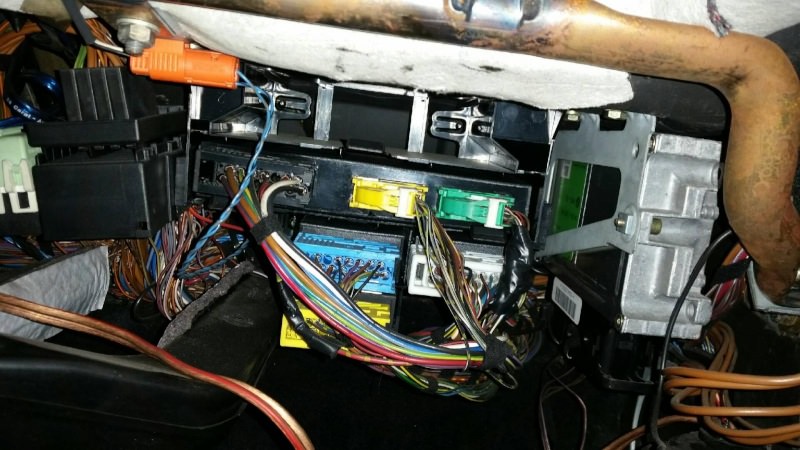Introduction
Owning a BMW is a dream for many car enthusiasts. These luxury vehicles are known for their exceptional performance and cutting-edge technology. However, one common issue that BMW Immobiliser Delete owners face is dealing with a malfunctioning immobiliser system. In this blog, we will discuss what an immobiliser is, common problems associated with it, and the process of deleting the immobiliser in your BMW.
Understanding the Immobiliser System
The immobiliser system is a security feature installed in most BMW vehicles. Its purpose is to prevent unauthorized access to your vehicle by disabling the engine from starting. The immobiliser relies on a transponder chip embedded in the car key, which communicates with the car’s Engine Control Unit (ECU). If the transponder chip is missing or the ECU fails to recognize it, the engine won’t start.
Common Immobiliser Problems
Just like any electronic system, the immobiliser can encounter issues. Some of the common problems BMW owners may face include:
- Key Malfunction: If the transponder chip in your car key is damaged or the key itself is defective, the immobiliser may not recognize it.
- Faulty ECU: The ECU may fail to receive signals from the transponder chip due to internal faults or damaged wiring, causing the immobiliser system to activate.
- Electrical Issues: Faulty wiring or a malfunctioning ignition switch can lead to problems with the immobiliser system.
- Battery Drain: A weak or dead battery can cause the immobiliser system to malfunction, preventing the engine from starting.
Reasons for Immobiliser Delete
While the immobiliser system enhances the security of your BMW, there are some instances where you may need to delete it, such as:
- Immobiliser System Failure: If the immobiliser system malfunctions repeatedly, and repairs seem costly or ineffective, deleting the system might be a viable solution.
- Upgrading or Swapping Engines: When replacing or upgrading your BMW’s engine, the new engine may not be compatible with the immobiliser system. In such cases, deleting the immobiliser is often necessary.
- Vehicle Customization: For those involved in motorsports or performance modifications, removing the immobiliser is often done to bypass potential complications caused by the system.
Process of Immobiliser Delete
Deleting the immobiliser system in your BMW should be done with caution and expertise. It typically involves the following steps:
- Identifying the Immobiliser Connections: Locate the immobiliser control unit in your vehicle. It’s usually found beneath the dashboard or near the fuse box. Identify the correct immobiliser connections, which vary depending on the BMW model and year.
- Obtaining the Immobiliser Delete Kit: Purchase an immobiliser delete kit specific to your BMW model. This kit usually includes software and hardware components necessary for the removal process.
- Disconnecting the Immobiliser: With the car battery turned off, follow the instructions provided in the kit to safely disconnect the immobiliser system. Carefully remove any wiring connections to ensure it’s completely disconnected.
- Installing the Immobiliser Delete Kit: Install the immobiliser delete kit components according to the included instructions. This may involve wiring modifications or reprogramming the ECU.
- Testing and Final Adjustments: Once the immobiliser delete kit is installed, reconnect the car battery and test the system thoroughly. Make any necessary adjustments to ensure proper functionality.
Important Considerations
Before attempting to delete the immobiliser in your BMW, it’s crucial to keep the following points in mind:
- Expert Assistance: Immobiliser delete procedures can be complex and vary based on your BMW model. It’s highly recommended to seek the help of a professional or experienced mechanic to ensure a successful removal process.
- Legal Compliance: Ensure that removing the immobiliser is legal in your jurisdiction. In some locations, tampering with or removing a vehicle’s immobiliser system may be prohibited by law.
- Security Measures: Deleting the immobiliser may compromise the security of your vehicle. Consider implementing alternative security measures, such as an aftermarket alarm system or steering wheel lock, to maintain the protection of your BMW.
Conclusion
The BMW immobiliser system is a valuable security feature, but certain circumstances may require its deletion. Whether it’s due to system failure, engine upgrades, or customization needs, the immobiliser delete process should be undertaken with care and expertise. Consult with professionals to ensure a smooth removal process, keeping in mind applicable laws and implementing additional security measures to safeguard your BMW.
